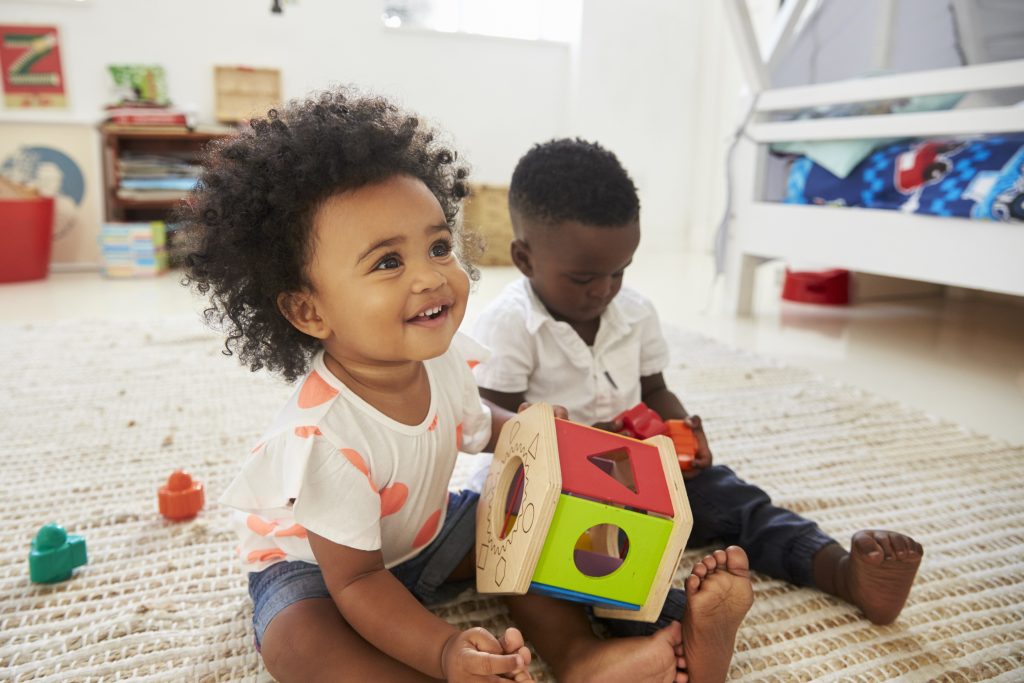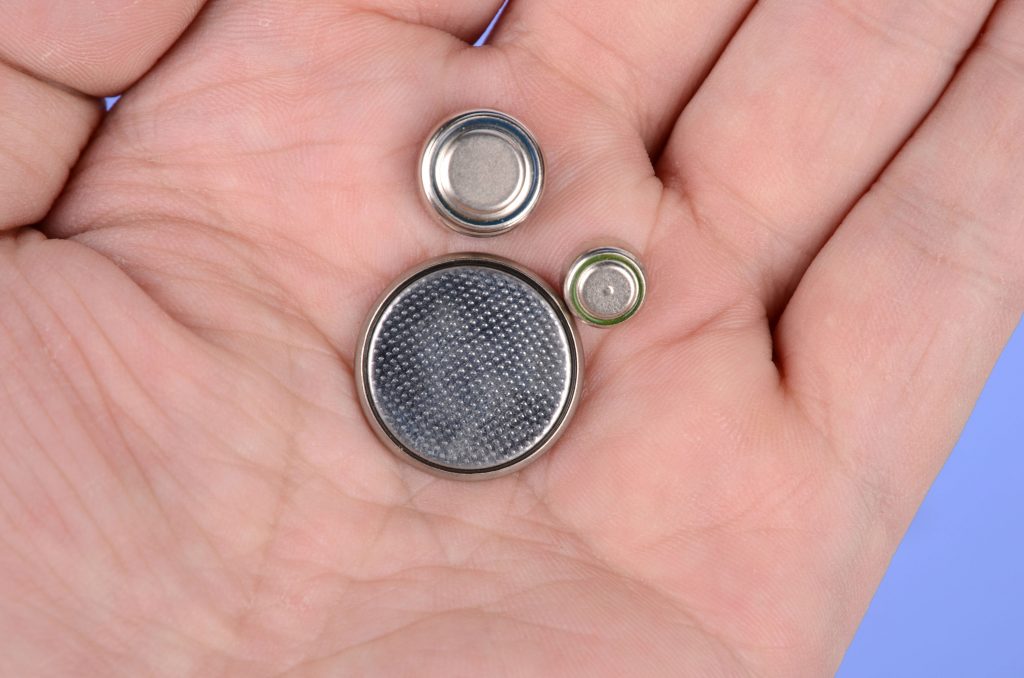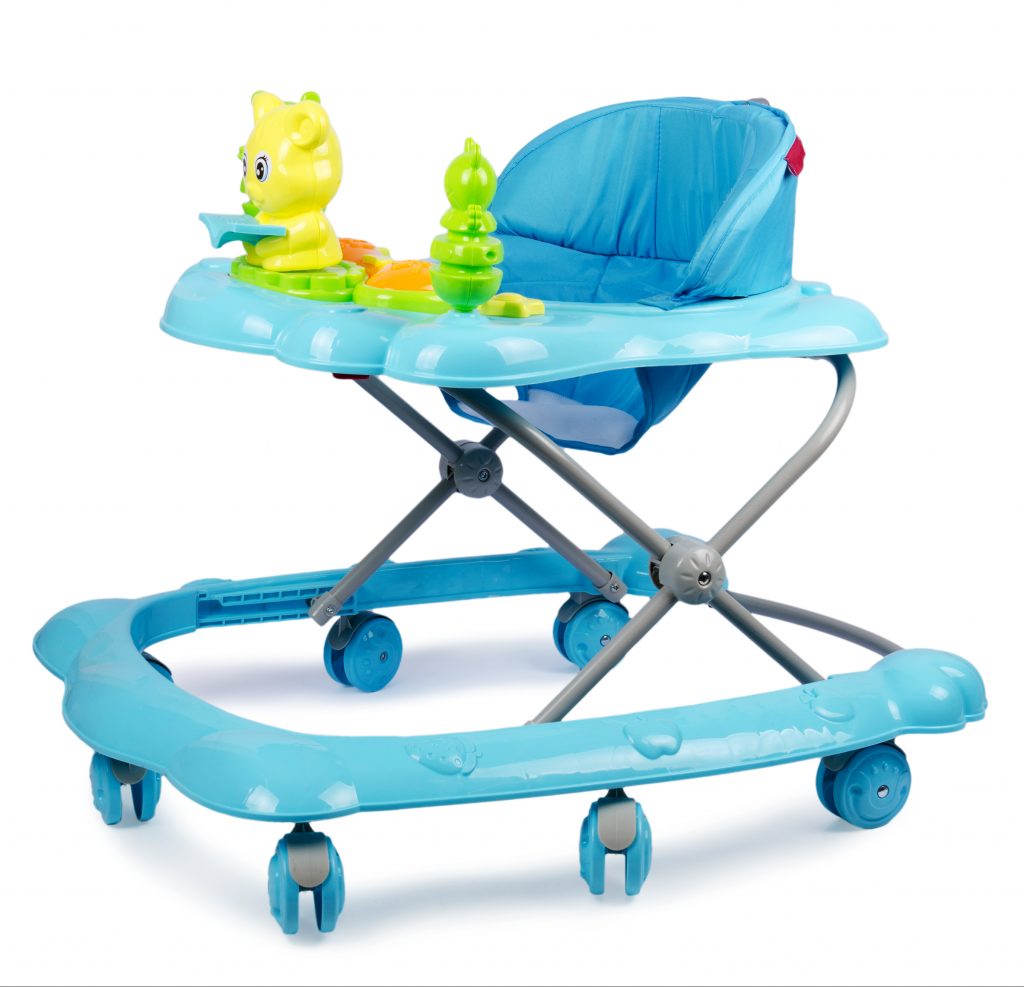Tips when choosing and using toys
Examine all toys
- Ensure toys have no small parts that can be pulled off and swallowed by young children.
- Check that the product is smooth and does not have sharp points or rough edges that could scratch or cut your child.
- Ensure that soft products are fire resistant and the stuffing can’t come out; soft stuffing can cause choking.

Choose age-appropriate toys
Pay attention to the age recommendations on toys. Any toy with a label indicating use for children over the age of three should be taken as a safety warning.
For children younger than three years (infants and toddlers):
- Keep them away from toys with small parts. Young children like to explore the world by putting things in their mouths. Toys meant for older children may have small parts that a young child can choke on.
To check if a toy or a toy part is a choking hazard, put it through a cardboard toilet paper roll (diameter 3 cm or 1¼ inches). Anything that fits inside the tube is a choking hazard for children under three years old.
- Avoid toys with long strings or cords that could get caught around a child’s neck. Toys strung across a crib or playpen (such as a mobile) can get caught around a baby’s neck. Remove all crib toys strung across the crib as soon as the baby starts to push up on hands or knees or is five months old (whichever comes first).
- Don’t put plush or stuffed toys in an infant’s crib as they can pose a suffocation hazard.
Be aware of button batteries

- Button batteries are used in many different household products, including children’s toys. Children may swallow a battery or insert one in their mouth, nose or ears. If chewed or swallowed, button-type batteries can cause internal chemical burns or poisoning.
- When you buy toys, look for ones with secure battery compartments, for example, where the battery compartment is sealed with screws. Check the toy periodically to ensure the batteries are secure and can’t be easily opened.
- Consider putting tape over battery compartments as an extra layer children need to go through to get to the battery.
Act quickly if you think your child may have swallowed a battery.
- Go to the emergency department immediately. Batteries can seriously harm a child within two hours. Be sure to communicate that the child has, or you think they have, ingested or inserted a button battery.
- While getting to the emergency department, if your child has swallowed a battery, give your child honey to swallow. Give them 10 ml (2 teaspoons) every 10 minutes for up to six doses. Stop at any point if your child is unable to swallow. Doctors recommend honey because it coats the battery and helps reduce the damage the battery can cause.
Know the dangers of sensory water beads

- Water beads (also known as jelly beads, sensory beads, hydro orbs, crystal soil or orb beads) are small, colourful gel beads used for various purposes, including home decoration, plant hydration and sensory play for children.
- These water-absorbing beads can expand up to 1,500 times their original size when exposed to water. Children may swallow water beads or insert one in their mouth, nose or ears.
- Water beads can continue to grow inside the body, leading to life-threatening injuries including intestinal blockages, suffocation, choking, poisoning as well as blockage if inserted into ear canals, nostrils or genitals.
Avoid having water beads at home to prevent injuries
Use safe alternatives such as sand, rice, playdough and foam blocks for sensory play. Parents and caregivers can also take the following steps:
- Always store water beads up high and locked, out of reach and sight.
- Supervise children when playing with water beads.
- For older children, parents should explain the risk that can result from swallowing water beads and make sure they keep them away from younger siblings.
- Seek immediate medical care for any child who has swallowed, or is suspected of having swallowed, one or more water beads.
Don’t let children chew on metal jewellery
Some jewellery contains high levels of lead, which can cause children to become seriously ill. For more information on lead poisoning, visit AboutKidsHealth.ca.
Keep small magnets away from children under six

- Small magnets found in toys, jewellery or on the fridge can be very dangerous to children.
- If a magnet becomes loose, a child can swallow it; if the child swallows more than one magnet, they can attract one another across intestinal walls, creating holes in the tissue and causing serious injury.
- Once magnetically attached, these objects aren’t likely to come apart without medical help or even surgery. The situation is particularly dangerous because the initial signs and symptoms, vomiting or a painful abdomen, are often thought to be a minor upset stomach or other common illness not likely to need medical intervention. This can then result in delayed diagnosis and a more severe injury.
- Seek immediate medical care for any child who has swallowed, or is suspected of having swallowed, one or more magnets.
- For older children who have access to magnets, parents should explain the risk that can result from swallowing them and make sure they keep the magnets away from younger siblings.
Supervise your children when they’re playing with balloons
A piece of latex balloon can easily block a child’s airways and stop a child from breathing. Make sure to throw away broken balloon pieces immediately. Mylar (foil) balloons are a safer option. When these balloons break into small pieces, they do not block a child’s airway.
Baby jumpers
Young children have been injured from baby jumpers when they were not used as intended. A baby jumper is a seat hung from the top of a doorframe with a clamp or from a free-standing frame and allows babies to bounce up and down. While these can be fun for a baby, they can cause injuries. Here are some safety tips for baby jumpers.
Choose the right jumper.
Make sure the jumper is appropriate for your baby’s height, weight and age. It’s important to follow the instructions. If you bought or borrowed a second-hand jumper, make sure the jumper has all its parts.
Set up the jumper correctly.
Injuries have occurred when baby jumpers aren’t installed or assembled properly. Check the instruction booklet for doorways that can support the jumper. Before you place your baby in the jumper, check that the clamps and straps are secured. Use the baby jumper as intended in the instructions.
Supervise your baby at all times.
Do not leave your baby unattended while in the jumper. Limit your baby’s jumping time to 10 to 15 minutes.
Baby walkers
Baby walkers are dangerous.

Baby walkers have caused more injuries to young children than any other nursery product. In Canada, approximately 500 babies were injured every year while using a walker – nearly three walker injuries every day. Walkers are dangerous because they allow a child to reach higher and move faster than the child could on their own.
Baby walkers are banned in Canada.
The ban applies to the sale of both new and second-hand baby walkers sold through flea markets, garage sales or thrift stores. Modified baby walkers with the wheels removed are also banned.
Parents who own a baby walker should stop using it. Before disposing of the baby walker, cut the seat and remove the wheels.
Stationary activity centres
Stationary activity centres allow babies to bounce up and down and rotate in the seat. This product lets children stand upright. This may mean they can then reach potentially dangerous items. Here are some safety tips for stationary activity centres.
Supervise your child at all times.
Your baby should never be left alone while they are in the activity centre.
Keep dangerous items away.
The stationary activity centre needs to be far away from stairs, doors, windows, coffee tables, fireplaces, blind cords and all other items that are dangerous. Your child can grab or fall onto these items. This has caused serious injuries. Make sure the toys on the activity centre are not broken or loose as sharp points can cut and small pieces can be swallowed.
Use the stationary activity centre properly.
Check the label to make sure the activity centre is strong enough to hold your baby’s weight.
Check for product recalls for children’s products
Visit Health Canada’s Consumer Product Safety website or call 1-866-662-0666 for:
- A list of products, including toys, baby jumpers, stationary activity centres and other children’s products that have been recalled by the manufacturer due to concerns with safety.
- More information on the safety of consumer products, including children’s products.
- Reporting forms for unsafe products: if you are shopping and see a product you think is a concern or is banned, such as yo-yo balls or baby walkers, you can report that to Health Canada.